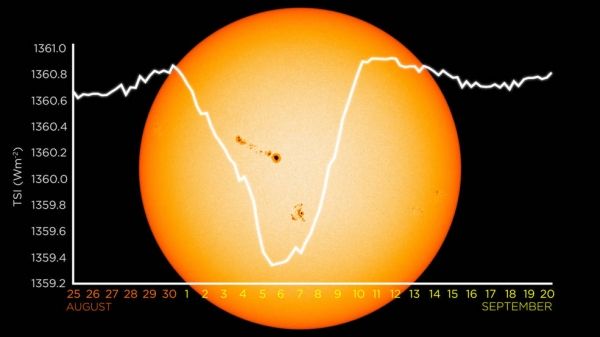The SORCE team turned off the spacecraft on February 25, 2020, concluding 17 years of measuring the amount, spectrum and fluctuations of solar energy entering Earth’s atmosphere — vital information for understanding climate and the planet’s energy balance. The mission’s legacy is continued by the Total and Spectral solar Irradiance Sensor (TSIS-1), launched to the International Space Station in December 2017, and TSIS-2, which will launch aboard its own spacecraft in 2023.
The Sun is Earth’s primary power source. Energy from the Sun, called solar irradiance, drives Earth’s climate, temperature, weather, atmospheric chemistry, ocean cycles, energy balance and more. Scientists need accurate measurements of solar power to model these processes, and the technological advances in SORCE’s instruments allowed more accurate solar irradiance measurements than previous missions.
“These measurements are important for two reasons,” said Dong Wu, project scientist for SORCE and TSIS-1 at NASA’s Goddard Space Flight Center in Greenbelt, Maryland. “Climate scientists need to know how much the Sun varies, so they know how much change in the Earth’s climate is due to solar variation. Secondly, we’ve debated for years, is the Sun getting brighter or dimmer over hundreds of years? We live only a short period, but an accurate trend will become very important. If you know how the Sun is varying and can extend that knowledge into the future, you can then put the anticipated future solar input into climate models together with other information, like trace gas concentrations, to estimate what our future climate will be.”
Continue reading at NASA Goddard Space Flight Center
Image via NASA Goddard Space Flight Center


